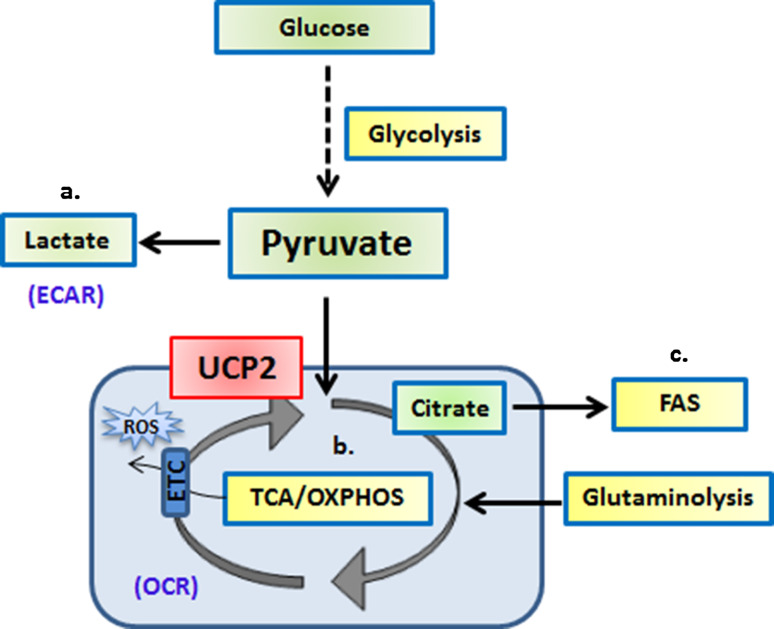Fig. 2.
UCP2 controls the fate of pyruvate oxidation depending on the bioenergetic demands of the cell. Pyruvate generated from glycolysis can have several fates: a it can be converted to lactate in the cytoplasm, b it can be transported into the mitochondria for conversion to Acetyl CoA for further oxidation via the TCA cycle, or c the citrate generated by pyruvate in the mitochondria is again transported out to the cytoplasm to produce malonyl-CoA and Palmitic acid for de novo fatty acid synthesis (FAS)

